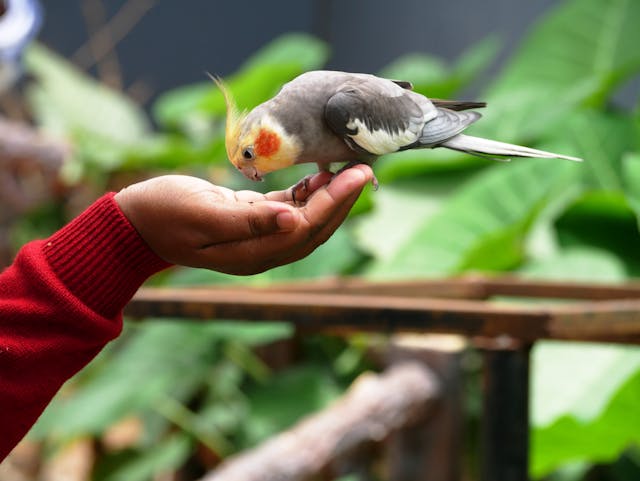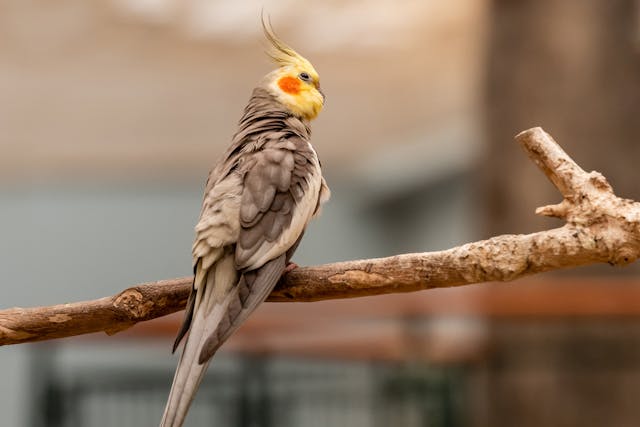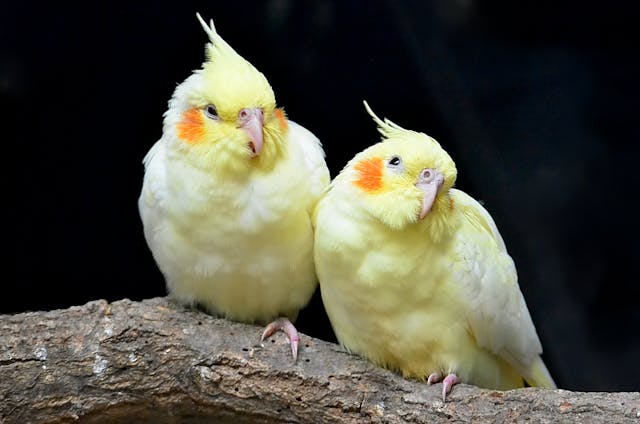Cockatiels, with their vibrant personalities and distinctive red cheeks, are among the most popular pet birds around the world.
These small parrots, native to Australia, have won the hearts of bird enthusiasts due to their friendly nature, ease of care, and ability to mimic sounds.
But what makes cockatiels unique, and why do they have those striking red cheeks? Let’s dive into the fascinating world of cockatiels to find out!
A Quick Overview: What Are Cockatiels?
Cockatiels (Nymphicus hollandicus) are a species of small parrot that belong to the cockatoo family. They are native to the arid and semi-arid regions of Australia, where they are often found in flocks, traveling in search of food and water.
Recognizable by their distinctive crests and colorful plumage, cockatiels are the smallest members of the cockatoo family.
They typically measure about 12 to 13 inches (30 to 33 cm) from head to tail and are known for their playful, curious, and affectionate behavior.
Why Do Cockatiels Have Red Cheeks?
One of the most distinctive features of cockatiels is the bright red or orange patches on their cheeks.

These cheek patches are more than just a pretty decoration—they serve important purposes related to communication and identification.
1. Sexual Dimorphism and Mating Signals
In wild cockatiels, the red or orange cheek patches are more vibrant in males than in females.
This difference, known as sexual dimorphism, helps cockatiels identify potential mates and distinguish between males and females within their flocks. A bright cheek patch in males often indicates good health and genetic quality, which is attractive to females during mating season.
Additionally, male cockatiels use their cheek patches, vocalizations, and displays to court females, showcasing their vibrant colors to win a mate.
2. Communication and Social Interactions
Cockatiels are highly social birds that rely on visual signals, such as the red cheek patches, to communicate with each other. These patches may help express emotions, intentions, or alertness, contributing to their ability to maintain complex social dynamics within flocks.
The brightness and intensity of the cheek color can also change slightly with age, health, and mood, providing visual cues to other cockatiels about an individual’s well-being and status.
3. Camouflage and Evolutionary Benefits
While bright red cheeks might seem counterintuitive for camouflage, they can help cockatiels blend in in the right environment.
In their natural Australian habitat, the light reflections on their feathers, combined with the unique coloring of their cheeks, can help them blend into the foliage, shadows, and the landscape of their arid environment, protecting them from predators.
The Charming Personality of Cockatiels
Cockatiels are known for their engaging personalities and charming traits that make them delightful companions. Here are some aspects of their behavior and care that make them unique:
1. Affectionate and Social Nature
Cockatiels are highly social birds that bond closely with their human companions and other birds. They thrive on interaction and enjoy being petted, held, or perched on a shoulder. They also love to whistle, sing, and even mimic sounds or words they hear frequently.

2. Playfulness and Intelligence
Cockatiels are intelligent and curious, always eager to explore their surroundings. They enjoy playing with toys, solving puzzles, and engaging in activities that stimulate their minds.
Providing them with various toys, including foraging toys and puzzles, helps keep them entertained and mentally sharp.
3. Easy to Train and Low Maintenance
Cockatiels are relatively easy to care for and train compared to other parrot species. They respond well to positive reinforcement and can learn various tricks and behaviors.
They are also less prone to the screaming and biting that some larger parrots exhibit, making them suitable pets for families or first-time bird owners.
Caring for Your Cockatiel: What You Need to Know
If you’re considering bringing a cockatiel into your home, it’s essential to understand their needs and provide an environment where they can thrive:
- Proper Housing: Cockatiels need a spacious cage that allows them to stretch their wings and move around comfortably. The cage should have horizontal bars to facilitate climbing and should be equipped with perches, toys, and swings.
- Diet and Nutrition: A balanced diet for a cockatiel should include high-quality pellets, fresh vegetables, fruits, and occasional seeds. Providing a variety of foods helps ensure they receive all the necessary nutrients for good health.
- Regular Exercise: Cockatiels are active birds that need regular out-of-cage time to exercise and explore. Providing them with safe, bird-proofed spaces to fly and play helps maintain their physical and mental health.
- Social Interaction: Cockatiels need daily interaction with their human companions or other birds to stay happy and healthy. They are prone to boredom and loneliness if left alone for extended periods, which can lead to behavioral problems.
Conclusion: The Delight of Having a Cockatiel
Cockatiels are known not only for their adorable red cheeks but also for their affectionate nature, intelligence, and playful behavior.
Their unique coloration serves essential purposes in their natural world, helping them communicate, attract mates, and camouflage.
As pets, they offer companionship and endless entertainment, making them a beloved choice for bird lovers worldwide. Understanding their needs and appreciating their unique characteristics can provide a fulfilling and enriching life for these charming feathered friends.
Whether you’re drawn to their distinctive appearance or sweet personality, cockatiels are a joy to have as part of your family.
